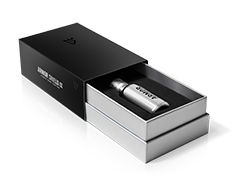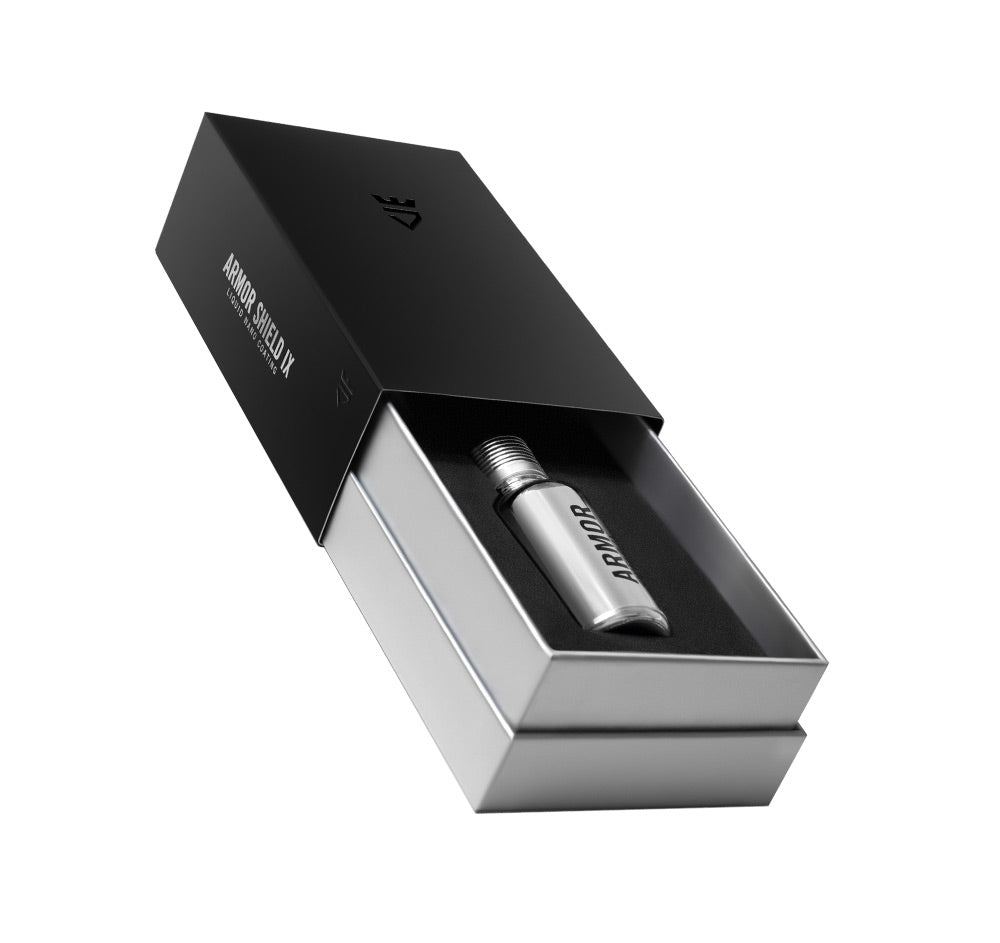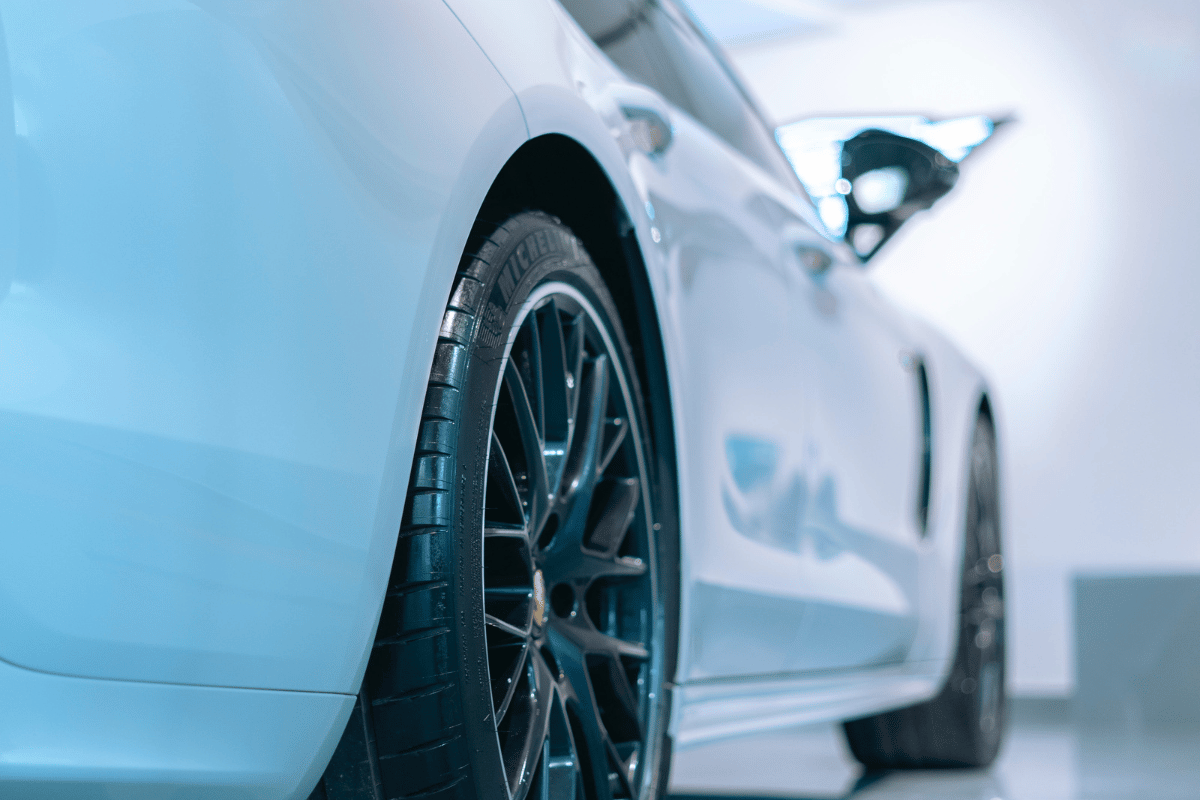When it comes to keeping your car looking great, there are two popular choices: wax and ceramic coating. They both claim to defend your car, but in different ways.
In this guide, we’ll break down the strengths and weaknesses of Ceramic Coating and Wax.
By the end, you can decide whether the ceramic coating or wax can keep your car safe and look aesthetically appealing. Let's understand how to protect your beloved car.
Understanding Wax
Wax, in the context of car care, is a protective product applied to the exterior surfaces of a vehicle to enhance its appearance and shield it against environmental elements. It’s typically made from natural waxes like carnauba or synthetic polymers.
The primary purpose of wax is to provide a glossy finish and protect the car’s paint. On top of that, it adds a layer that helps repel water and prevent contamination from bonding directly to the paint. As a result, it becomes easier to clean the car and maintain its shine.
Regular waxing gives the car a lustrous appearance and helps preserve the paint, extending its lifespan by shielding it from fading and minor scratches.
How Does Wax Work as a Protectant?
The wax protects your car by forming a thin, transparent layer on the vehicle’s surface. This layer acts as a barrier between the paint and various environmental elements.
When applied to the car’s paint, wax creates a hydrophobic (water-repelling) barrier that helps prevent water, dirt, and other contaminants from directly bonding with the car’s surface. Additionally, the wax layer helps reduce the impact of UV rays, which can cause the paint to deteriorate over time.
Wax acts like a seal for the paint, providing an extra layer of defense against environmental hazards such as road grime, bird droppings, tree sap, and other airborne pollutants.

Types of Wax Available
In the realm of car care, various types of wax are available, each with its specific characteristics and application methods. Some common types of wax used for car protection and shine include:
Carnauba Wax
Derived from the leaves of a carnauba palm tree, it’s known for providing warm, deep shine and excellent water beading. Carnauba wax is famous for its glossy finish and is often used in premium car care products.
Synthetic Wax
Also referred to as paint sealants, these are made from synthetic polymers. They offer long-lasting protection compared to natural waxes and are more resilient against harsh environmental conditions.
Spray Wax
Convenient and easy-to-apply spray waxes offer quick touch-ups and can be used as maintenance between more extensive waxing sessions. They are often applied after washing the car.
Liquid Wax
They are relatively easy to apply and provide good shine and protection. They might require more effort compared to spray waxes but offer more durability.
Paste Wax
Paste waxes generally require more effort to apply but can provide an intense and warm shine. They are preferred for luxury or classic cars.
Colored Wax
These waxes include a bit of pigment and can assist in minor touch-ups or filling in small scratches while providing protection and shine.
Hybrid Wax
Combining the benefits of synthetic and natural waxes, hybrid waxes offer a blend of durability and a deep, glossy finish.
Pros and Cons of Wax
Below are the pros and cons of using car wax:
Pros
- Provide a glossy finish to the car’s paint.
- Simple to apply without complex procedures.
- Enhances paint color and depth, providing a rich appearance.
- Cost-effective option for car protection.
Cons
- Requires frequent reapplication, which can be time-consuming.
- Offers less protection compared to ceramic coating.
- Less resilient against environmental factors like UV rays and harsh contaminants.
- In extreme heat, wax can soften and melt, potentially causing uneven experience.
Introduction to Ceramic Coating
Let’s understand what ceramic coating is, how it works, its types, and much more.
What is Ceramic Coating?
Ceramic coating is also known as the liquid polymer applied to the exterior of a vehicle. When cured, it forms a protective layer on the paint’s surface.
This coating creates a chemically resilient and long-lasting bond with the vehicle’s paint, protecting against environmental contaminants like dirt, road grime, bird droppings, and UV rays.
Car enthusiasts highly prefer ceramic coating due to its durability, water-repellant properties, and ability to provide a long-lasting glow to the car’s finish.

How Does Ceramic Coating Work as a Protectant?
Ceramic coating safeguards your car by creating a robust and transparent shield on the paint. This protective shield is made of nanoparticles that chemically bond to the surface, creating a durable barrier against environmental hazards.
It acts as a barrier against common adversaries like bird droppings, dirt, and tree sap. These contaminants are less likely to stick to the surface and become embedded, making it easier to clean your car.
Moreover, the hydrophobic nature of ceramic coating repels water and prevents water spots, making your car easier to wash and clean.
Types of Ceramic Coating Available
Different types of ceramic coatings are available for cars, each offering varying characteristics and features. Some common types include:
Silica-Based Coatings
These are among the most popular types, offering high durability and protection. They are known for their hardness and resilience.
Graphene Coatings
Leveraging advanced graphene technology, these coatings provide excellent heat resilience, durability, and enhanced hydrophobic properties.
Titanium Dioxide Coatings
These coatings offer exceptional UV protection and are known for their self-cleaning properties.
Hybrid Coatings
Blending different materials, these coatings combine various properties, mainly durability, water repellency, and gloss enhancement.
Ceramic Nanocoatings
These coatings harness nanotechnology to create a thin, protective layer that bonds with the car’s surface, providing excellent durability and contaminant resistance.
SiO2 (Silicon Dioxide) Coatings
Known for their durability and water-repellant properties, these coatings provide a strong protective layer.
Pros and Cons of Ceramic Coatings
Below are the pros and cons of ceramic coating:
Pros
- Provides long-lasting protection that lasts for years.
- Offers a glossy finish and maintains the original paint.
- Shield against bird droppings, dirt, and other environmental hazards.
- Helps prevent fading caused by the UV rays.
Cons
- Initial application can be expensive.
- Requires meticulous surface penetration and skilled application.
- While durable, it can still get scratched or damaged.
- Regular maintenance is crucial for long-lasting effectiveness.
Comparison: Ceramic Coating vs. Wax
When selecting the best protection for your car’s paint, it’s essential to weigh the differences between ceramic coating and wax. Each offers unique benefits in durability, application ease, and overall effectiveness in shielding against various elements.
Here is a detailed comparison of them:
Durability and Longevity
- Ceramic Coating: Provides a long-lasting shield, typically lasting 2-5 years.
- Wax: Offers a short-term protection, usually lasting a few months.
Ease of Application and Maintenance
- Ceramic Coating: Demands meticulous application and requires less frequent maintenance.
- Wax: Easy to apply but requires frequent reapplication for sustained protection.
Protection Against UV Rays, Scratches, and Chemical Contaminants
- Ceramic Coating: Provides strong defense against UV rays, scratches, and chemical contaminants.
- Wax: Provides some protection but is less resilient compared to ceramic coating.
Gloss and Shine Enhancement
- Ceramic Coating: Offers a more appealing and long-lasting glossy finish.
- Wax: Provides a glossy finish but requires more frequent reapplication to maintain the shine.
Price Range and Cost Effectiveness
- Ceramic Coating: High initial cost but proves cost-effective due to its longer life span.
- Wax: Low initial cost but needs more frequent application, which may increase costs over time.

Factors to Consider When Choosing Between the Two
You must consider multiple factors when choosing between ceramic coating and wax for your vehicle. Here is a comprehensive rundown of the critical considerations for choosing the ideal protection method:
1. Budget
Consider the cost of the initial application and potential long-term expenses, including reapplication.
2. Desired level of protection and durability
Examine the type of protection needed and the expected durability, keeping in mind the different lifespans of each option.
3. Time for application and maintenance
Evaluate the time required for initial application and subsequent maintenance, considering personal schedules and convenience.
4. Skill Required for Application
Evaluate the time required for the initial application and subsequent maintenance, considering personal schedule and convenience.
These factors play a decisive role in deciding between the ceramic coating and wax, ensuring that you select the protection method that aligns with your budget, desired level of defense, time commitment, and skill sets.
Can You Use Ceramic Coating and Wax Together?
Yes, you can use ceramic coating and wax together, but it is generally not recommended. Ceramic coating creates a durable protective layer on the paint, offering long-term protection.
Applying wax may not adhere well to the ceramic coating and may deteriorate its performance.
But there are also certain cases where combining the two can be advantageous. Let’s look at the benefits.
Benefits of combining ceramic coating and wax
Combining ceramic coating and wax offers various advantages, including:
1. Enhanced protection
The ceramic coating provides long-term durability against various contaminants, while the wax adds an extra layer for maximum protection, particularly in high-tear areas.
2. Boosted gloss and shine
The combination can amplify the paint’s gloss and shine, as the ceramic coating provides a fundamental layer, and the wax provides an additional level of shine to the car's surface.
3. Water beading and hydrophobic properties
Ceramic coating is known for its water repellency, and blending wax with it can further improve water beading, making the surface easier to clean.
Application sequence for maximum protection
For maximum protection, an ideal application sequence is as follows:
1. Preparation
Thoroughly wash and dry the vehicle to ensure a clean surface, free from all contaminants.
2. Surface inspection
Check for imperfections or areas needing corrections, like scratches or swirl marks. Address these imperfections if required.
3. Ceramic coating application
- Apply the ceramic coating using the provided applicator, following the manufacturer’s instructions.
- Work in small sections, ensuring even application and complete coverage.
- Allow these coatings to cure for the recommended time before proceeding to the next step.
- Once the ceramic coating has cured, apply wax on top for extra gloss and protection.
- Follow the wax manufacturer’s instructions for application and buffing.
5. Final inspection
Once the application is completed, inspect the surface for uniform coverage and any missed areas. Touch up if needed.

Frequently Asked Questions (FAQs)
Let’s look at the top FAQs on ceramic coating vs. wax:
Can you wax over ceramic coating?
Waxing over the ceramic coating is possible but generally not recommended. Ceramic coating is designed to create a durable, long-lasting protective layer on the car’s paint. Wax may not bind well to ceramic, potentially affecting its performance.
How often do you need to reapply?
Ceramic coating typically lasts 2-5 years, depending on the maintenance and product quality. You need to assess its performance regularly. Signs like diminished gloss can indicate the need for reapplication.
On the other hand, wax provides shorter protection, lasting a few months. Reapplication frequency varies but usually occurs every few months.
Is ceramic coating better than wax?
The choice between the two depends on individual preferences, budget, and desired level of protection. Ceramic coating usually entails a higher initial cost. Although wax is more budget-friendly, it requires more frequent reapplication for sustained protection.
Conclusion
Comparing ceramic coating vs. wax reveals significant differences in car protection. Ceramic coating offers long-lasting defense against UV rays, scratches, and contaminants, requiring less maintenance. Conversely, wax, more budget-friendly, demands frequent reapplication for sustained protection.
Choosing between the wax or ceramic coating depends on preferences and protection needs. Choose the enduring protection of ceramic or the classic appeal of wax for your car’s paint. Take action today to protect your car’s paint. Your ride deserves the best care!
If you are looking for great DIY ceramic coating kits, we at Avalon King have a great range of products for every process stage. This includes preparation, protection, and maintenance! Here’s our entire product range for quick access.











![[2023 Guide] The Truth about Ceramic Pro vs DIY Ceramic Coatings](http://avalonking.com/cdn/shop/articles/Ceramic-Pro-vs-DIY-Ceramic-Coatings_1000x.jpg?v=1651076354)
